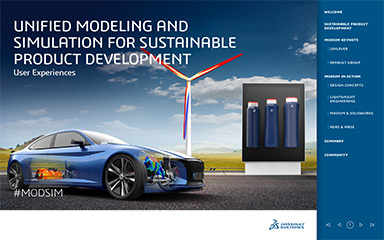Live from CAASE: Simulation Helps NuStep Improve Component Design
Latest News
June 6, 2018
Exercise machine manufacturer NuStep was able to improve the performance and durability of a key component in its cross trainers using finite element analysis (FEA), while also reducing weight. Simulation specialists Caelynx explained how FEA helped the company transition from a welded part to a cast part during their presentation at the Conference on Advancing Analysis & Simulation in Engineering (CAASE18) in Cleveland this week.
Caelynx helped NuStep improve its cross trainer design using FEA to design a cast part. The next step is 3D metal printing #CAASE18 pic.twitter.com/V62h4y8Bd9
— Digital Engineering (@DEeditor) June 6, 2018
NuStep designs recumbent cross training machines for use in physical therapy and cardiac/stroke rehabilitation in medical facilities. The company’s T5-XR model includes a component in the portion of the device that the patients use to move their legs referred to as a sickle. That particular part is made of iron and previously was welded together. After experiencing some weld failures that resulted in warranty claims, the company decided to make the part using a casting process.
“The sickles are inside the machine and are loaded by the user’s legs,” said Joe Formicola, president of Caelynx. “They need to withstand isometric stretch loads and overloads, binding and torsional loading. They also needed to minimize rotational inertia so the machine would have a better dynamic feel for the user.”
NuStep asked Caelynx to help simulate the sickle as a cast part to optimize the design.
Design Optimization
The company used Dassault Systemes’ Tosca optimization to evaluate and build the final model and generate a design space as well as set up optimization parameters. Caelynx conducted three studies on the initial design based on different optimization targets and combinations of constraints.By combining two of the results in order to achieve targeted displacement and inertia goals, NuStep was able to come up with an optimal design that reduced weight and ensured the machine would steel operate comfortably for users. The new design incorporates cut outs and helix structures.
NuStep also asked Caelynx to generate an optimized topology in Tosca based on 3D printing of the component. That effort resulted in an organic design. “We got a very weird shape once we eliminated those manufacturing constraints,” Formicola said. “It’s a hollow structure with most of the material on the surface.”
That theoretical design could potentially provide even more improvements, reducing displacement from .24 to .11, significantly reduced rotational inertia, and cut the weight almost in half.
While NuStep has no immediate plans to print the part, they are investigating the economics of doing so.
“We showed we can use simulation to improve the design of the parts with a typical manufacturing process like casting,” Formicola says. “Where can we go from there when we can use those tools and additive manufacturing, and start building parts like that? This gave them an idea of what might be possible.”
Subscribe to our FREE magazine, FREE email newsletters or both!
Latest News
About the Author
Brian Albright is the editorial director of Digital Engineering. Contact him at de-editors@digitaleng.news.
Follow DE





